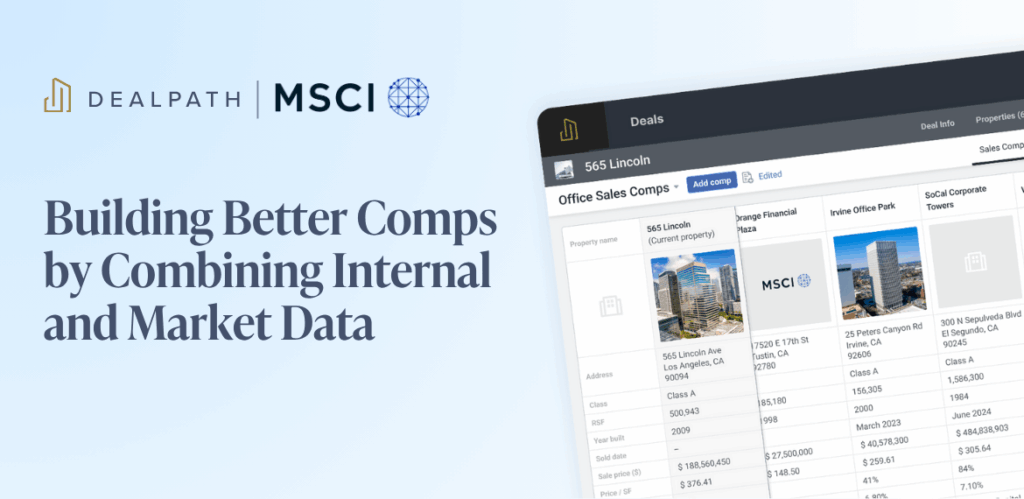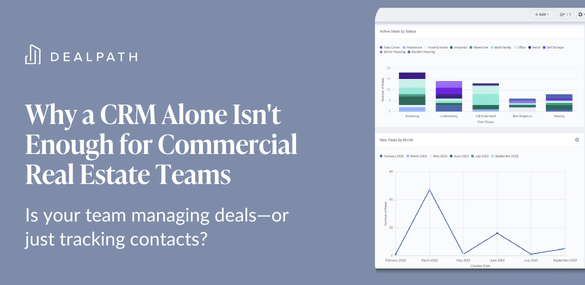This blog post was last updated on Wednesday, November 16th.
Commercial real estate buildings vary drastically when it comes to condition, amenities, age, proximity to city centers and other factors. That’s why commercial real estate investors classify properties into Class A, Class B and Class C based on these factors, and more broadly, the investment’s risk. While this classification system is nuanced and subjective, it provides investors with a simplified, universally understandable way to communicate about properties within respective markets. Each property class indicates a different level of risk and opportunity, providing investors with an immediate indication of how the property could impact their portfolios.
Read on to learn more about the differences between Class A vs. Class B, and Class C commercial real estate properties.
Jump to:
- What Is a Property Classification in Commercial Real Estate?
- Class A Vs. B Vs. C: What’s the Difference?
- Class A
- Class B
- Class C
- What Is the Best Commercial Real Estate Property Class to Invest In?
What Is a Property Classification in Commercial Real Estate?
What is a Class A, Class B or Class C property? Property classifications help investors easily understand the value and risk profile of a property before investing. Rather than hard-and-fast labels, investors loosely apply property classifications based on a number of different factors. According to the Building Owners and Managers Association, these factors normally include:
- Risk and return
- Features
- Amenities
- Location within a city/region
- Tenant and rental income
- Growth potential and appreciation
- Age
Investors normally consider these criteria when determining whether a building should be labeled Class A, Class B, or Class C. However, excelling in one category won’t necessarily cause the property to rank in Class A–this is determined by a combination of some or all of these factors. This criteria may vary from firm to firm as well.
Like cap rates, building classes are intended to act as relative metrics, primarily for comparison with other buildings within the same market or region. The standards for a Class A building in New York City are much higher than those in Milwaukee. Identifying the property class in a pipeline management software like Dealpath helps investors to set benchmarks and compare apples to apples.
As buildings improve or deteriorate over time, they can shift from one class into another. Nonetheless, an ideal location will always add value, while a less favorable location may hold even a newly updated building back from Class A.
Class A Vs. B Vs. C: What’s the Difference?
Buildings in different property classes offer tenants varying levels of luxury, amenities, and accessibility within their respective city or region. Higher-quality properties that present lower risk are considered Class A properties, while lower-quality properties that present higher risk are classified as Class C. Sitting between these two property classes is Class B, providing a functional space without the frills of Class A or the downsides of Class C.
Class A Property: Premium Buildings in Central Business Districts
Class A includes the highest-quality buildings on the market, although these standards and thresholds can vary by city. These buildings are typically built within the last 15 years, as property classifications change over time. Even after the 15-year threshold, significant renovations that modernize a building could elevate it to Class A.
By definition, Class A buildings are normally located in central business districts, or densely populated urban centers within major cities. Because these buildings are accessible via public transportation and centrally located amongst similar buildings, they are more valuable in the eyes of tenants. As a result, rents tend to be above average in the respective market.
Naturally, Class A buildings command attention from high-paying tenants, which means they can yield the highest rental income and are the most profitable. These buildings are generally occupied by highly creditworthy tenants, making them the lowest-risk property class. They also offer world-class amenities, including sprawling lobbies, high ceilings, modern light fixtures and HVAC systems, as well as other desirable features.
To deliver the highest-quality experience for tenants, these buildings are often managed by professional property managers, who can work to ensure that tenants are satisfied enough with the property to renew their leases. In most cases, there are no deferred maintenance issues that go unnoticed or leave tenants with sub-par experiences.
Class B Property: Functional Buildings With Average Rents
By definition, Class B buildings are older than Class A buildings, meaning that the investment opportunity presents a relatively higher risk for investors. While Class B buildings aren’t necessarily in disrepair or on the outskirts of a city, they are generally middling in quality.
In most cases, Class B buildings don’t offer the same luxurious amenities or centralized location as Class A buildings. They are normally older than 15 years, putting them slightly out of touch with modern building trends. However, they normally provide adequate facilities and middle-of-the-line experiences. In turn, Class B buildings tend to generate average market rents.
Because Class B buildings aren’t guaranteed to generate the highest returns, they’re viewed as riskier investment opportunities. Some investors with a value-add strategy Class B buildings as renovation opportunities. After bringing new life to a building, investors could generate Class A rents, or sell the property for a high return.
Class B buildings may or may not be professionally managed by a company or individual. It’s not uncommon for buildings in this property class to have deferred maintenance issues, although slight inconveniences may not necessarily drive tenants elsewhere.
Class C Property: Lower-Quality Buildings Charging Below-Average Rents
Class C buildings sit on the opposite end of the spectrum from Class A buildings. Unlike either of the other property classes, Class C office buildings are often located in less-than-desirable locations. They tend to be situated away from city centers, entertainment, financial districts and other key locations.
Most Class C buildings are at least 20 years old and in a state of relative disrepair. They may offer functional space for tenants, but most are in need of substantial renovations. In light of this, Class C buildings normally collect lower-than-average rents.
Class C buildings aren’t highly profitable directly after the purchase, relative to other property classes. For some investors, Class C buildings present an opportunity to purchase, renovate and flip. Because of the work and capital required to generate returns, investors consider Class C the riskiest property class.
What Is the Best Commercial Real Estate Property Class to Invest In?
Despite differences in quality, no one commercial real estate property class is necessarily better than another. Instead, investors often pursue properties in different classes based on defined strategies and market signals.
Some opportunistic investors may favor low-risk Class C buildings, with the goal of adding value to sell the property at a higher price or substantially increasing rents. After significant renovations, a Class C property could easily make its way into Class B, or even Class A. Conversely, other investors may opt toward low-risk and more liquid Class A properties, which are more likely to maintain consistent cash flow. In certain situations, Class A properties may also be easier to sell. Sitting between high- and low-risk profiles, Class B properties are neither as expensive as Class A buildings nor as risky as Class C buildings.
Seamlessly Compare Properties In Varying Property Classes to Surface the Best Deals
Commercial real estate investment software can prove invaluable as you review your pipeline, allowing you to vet and evaluate properties in your pipeline, comparing them against historical comps, with ease.
To learn how your firm can make data its competitive advantage and surface the best deals, watch our on-demand webinar.
Watch Now


